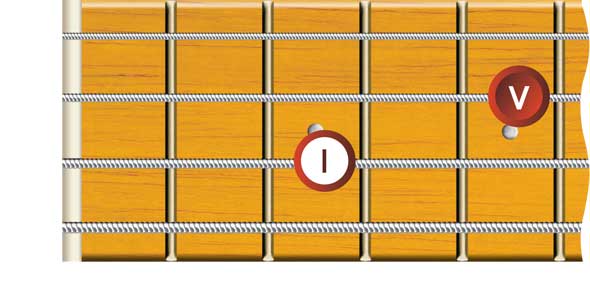
Intervals
An interval is the distance between any two notes of different pitches.
In written music the smallest distance between two notes is called a semitone. On the Bass guitar a semitone is the distance of 1 fret.
Within 1 octave of music (i.e., the range of 8 notes, e.g., C D E F G A B C), there are 12 semitones (12 frets).
There are 12 different intervals, all of which are illustrated in the following table.
- The smallest interval, is a semitone (i.e., 1 fret) this is called a Minor Second. Thus if you play a note that is 1 fret above a given starting note (Root note) the interval is a minor second.
- The next interval is a tone (2 frets) above the Root note.

Chords, melody and scales are all made from combinations of intervals. If a Bass player is required to create or improvise a bass line for a chord progression or song they will need to know the relative positions of these intervals on the fretboard.
The easiest way to remember intervals is to remember their pattern on the fretboard. In the following fretboard diagram all the interval positions are shown relative to a given Root note. Although the root illustrated is shown on the 4th string, the relative positions (patterns) remains the same regardless of where the root note is located.
Interval Chart

Interval Fretboard Diagrams of The C Major Scale
Tone (maj 2nd)

maj 3rd

4th

5th

maj 6th

maj7

Octave



Interval Patterns Within One Octave
There is often more than one option, shape or fingering on how to play an interval. The following diagrams show all intervals individually with the most common finger pattern within one octave. All interval patterns can be played in different locations on the fretboard and on different strings. It is very useful to be thoroughly familiar with the intervals as they are the basis of all scales, chords and basslines etc.
semitone (min 2nd)

Tone (maj 2nd)

Tone

min 3rd

min 3rd

maj 3rd

4th

Tritone (#4th/b5th)

5th

min 6th

min 6th

maj 6th

min 7th

maj 7th

Octave (8th)
